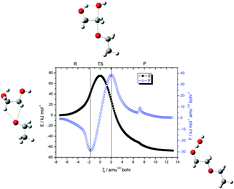Modeling the mechanism of glycosylation reactions between ethanol, 1,2-ethanediol and methoxymethanol†
Abstract
The mechanism of the SN2 model glycosylation reaction between

* Corresponding authors
a
Instituto de Química Médica, I.Q.M.-C.S.I.C., Juan de la Cierva, 3, Madrid, Spain
E-mail:
luisazofra@iqm.csic.es
Web: http://are.iqm.csic.es
Fax: +34 91 564 48 53
b Laboratorio de Química Teórica Computacional, QTC, Facultad de Química, Pontificia Universidad Católica de Chile, Casilla 306, Santiago de Chile, Chile
The mechanism of the SN2 model glycosylation reaction between

 Please wait while we load your content...
Something went wrong. Try again?
Please wait while we load your content...
Something went wrong. Try again?
L. M. Azofra, I. Alkorta, A. Toro-Labbé and J. Elguero, Phys. Chem. Chem. Phys., 2013, 15, 14026 DOI: 10.1039/C3CP51963E
To request permission to reproduce material from this article, please go to the Copyright Clearance Center request page.
If you are an author contributing to an RSC publication, you do not need to request permission provided correct acknowledgement is given.
If you are the author of this article, you do not need to request permission to reproduce figures and diagrams provided correct acknowledgement is given. If you want to reproduce the whole article in a third-party publication (excluding your thesis/dissertation for which permission is not required) please go to the Copyright Clearance Center request page.
Read more about how to correctly acknowledge RSC content.
 Fetching data from CrossRef.
Fetching data from CrossRef.
This may take some time to load.
Loading related content
